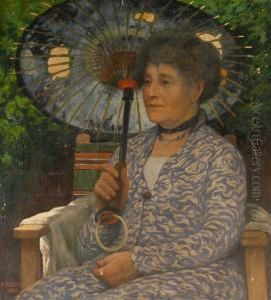Frederick Dudley Walenn Paintings
Frederick Dudley Walenn was a British artist born in 1873, primarily known for his work as a painter and etcher. Though not as widely recognized as some of his contemporaries, Walenn was a skilled artist whose work reflected the styles and concerns of his time.
Walenn's upbringing and early life are not extensively documented, but it is known that he pursued an artistic career that led him to become a part of the British art scene in the late 19th and early 20th centuries. He was active during a period of great change and innovation in the art world, which saw the transition from Victorian to modernist sensibilities.
His work often included landscapes, seascapes, and cityscapes, capturing the essence of English rural and urban settings with a particular sensitivity to light and atmosphere. Walenn's etchings and paintings showed a proficiency in rendering detailed scenes with a level of romanticism, which was characteristic of the period.
Throughout his career, Walenn exhibited his work at various institutions and galleries, including the Royal Academy and the Royal Society of British Artists. He was a part of the art community that included etchers and engravers, a group that had a significant following in Britain during the late 19th and early 20th centuries. He was also a member of the Royal Society of Painter-Printmakers, which was indicative of his commitment to the craft of printmaking.
Frederick Dudley Walenn passed away in 1949, leaving behind a body of work that, while perhaps not as well-known as some of his peers, provides insight into the artistic movements and techniques of his time. His contributions to British art, particularly in the realm of etching, are a testament to the diverse and rich landscape of art during the transitional period between the Victorian era and the modernist movement.

